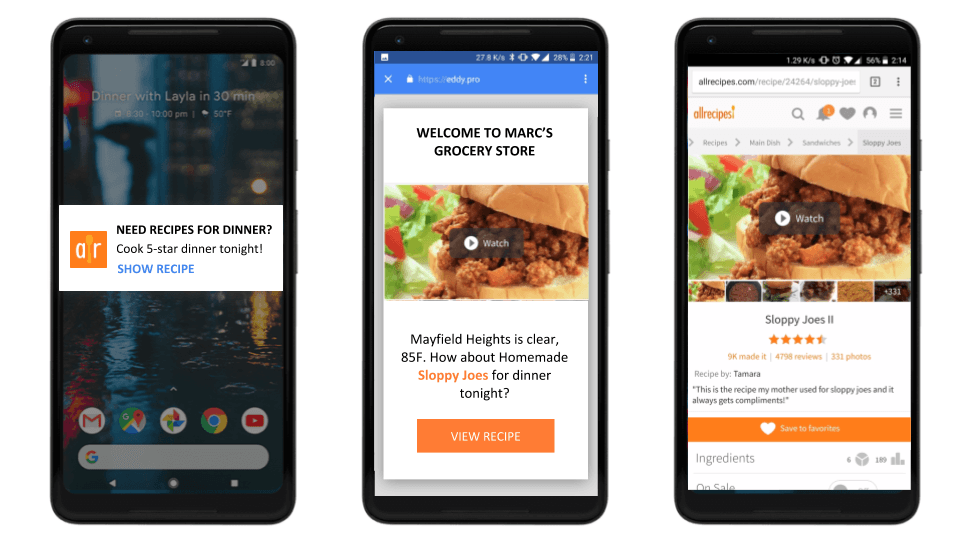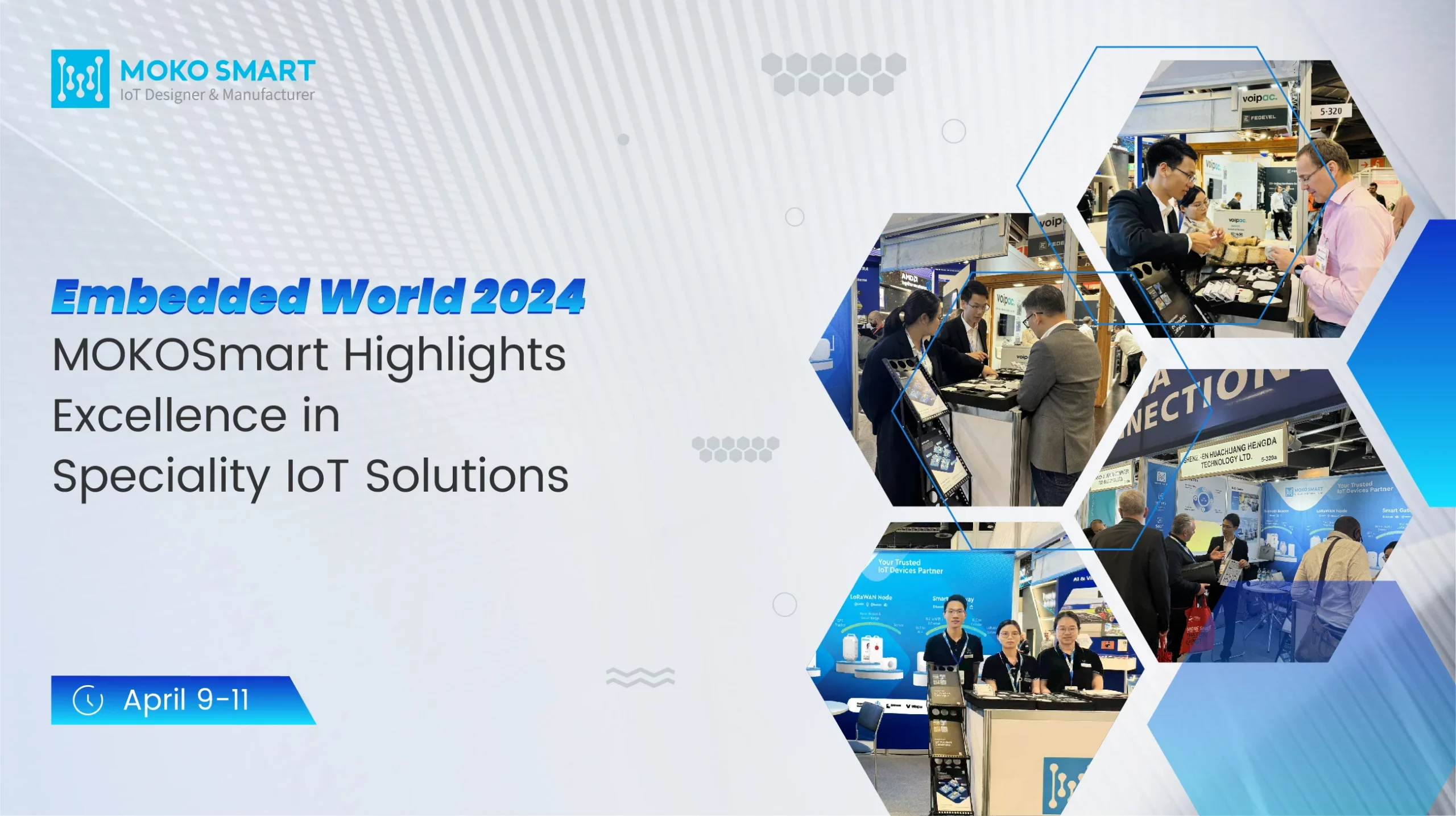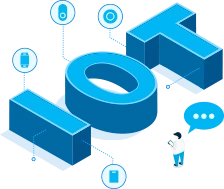You are here because you want to know about beacon marketing. At its core, beacon marketing utilizes small, low-cost BLE devices called beacons to deliver highly targeted, contextual, and engaging marketing messages directly to consumers’ smartphones.
Beacon technology has been really popular among marketers since its arrival. According to a prediction by Fortune Business Insights the beacon technology will surpass about $31.61 billion by 2026. So it is pretty safe to say that beacon technology has a lot of potential and is capable of growing in the coming years.
But what exactly is beacon marketing, how does it work? And how to start with beacon marketing to meet your business goals? Let’s dive into the nitty-gritty details.
What is beacon marketing?
Beacon marketing is a proximity-based marketing technique that leverages beacons – tiny, battery-powered devices that continuously broadcast BLE signals containing unique identifiers and other relevant data. These BLE beacons are strategically placed in physical locations, such as event venues, retail stores, or public spaces. When a customer’s smartphone comes within range of a beacon, it can trigger specific actions, such as push notifications, location-based offers, or contextual content delivery.
Beacon-based marketing provides companies with an interesting and unique way to interact with their customers. Notably, 50% of the top 100 global brands are already using beacons in their stores, and studies show that the number of deployed beacons worldwide has increased to 60 million in 2019.
A brief history of beacon marketing
Now you are familiar with the beacon technology. Now let’s have a look at the brief history of this technology.
Apple launched iBeacon as a part of iOS 7 at WWDC 2013. Apple installed beacon marketing tools in its 254 shops in the USA and started providing notifications about different products in-store.
In 2014, Macy’s installed 4000+ beacon devices across the shops. Moreover, Aruba Networks also implemented indoor navigation by utilizing beacons.
In 2015, most downloading apps such as Facebook and Shazam started integrating beacons to enhance their functionality. In the same year, Google announced a competitor to Apple’s iBeacon that was Eddystone.
In 2016, the user needed to download apps to avail of the functionality of the beacon which stopped the popularity of the beacon. However, Google took a step and modified beacon technology such that users no longer needed to download any app, resulting in a resurrection in popularity.
After the rise of beacon technology, Bluetooth states that beacon technology will become the base of the Internet of Things.
Understanding beacon types and standards
There are different types of beacons available in the market such as GeoBeacon, Ultrasounds, and Wi-Fi aware. However, the most prominent types of beacons are iBeacon, Eddystone, and AltBeacon. Let’s take a glimpse of some famous beacons:
-
iBeacon from Apple
![]()
It was the first beacon launched by Apple in December 2013. iBeacon is a proprietary protocol in Apple’s ecosystem. It uses low-energy Bluetooth vicinity-detecting technology for the transmission of a universally unique identifier commonly known as UUID. The UUID consists of a string having 24 numbers which are used to communicate with an installed app.
-
Eddystone from Google
![]()
Google launched this beacon in 2015. It is an open-source protocol compatible with both Android and iOS. This beacon is cable to transmit three frame types. Google facilitates different businesses to manage their beacons by utilizing the Proximity Beacon Application Programming Interface.
-
AltBeacon from Radius Networks
![]()
Radius Networks launched this beacon in 2014. It is compatible with different cell phone operating systems. Moreover, it is an open-source beacon that has created an open market for different beacon applications.
How does beacon marketing work
Beacon marketing operates on the principles of Bluetooth Low Energy (BLE) technology, enabling short-range wireless communication between beacons and smartphones. Here’s how the beacon marketing ecosystem works:
Beacon Deployment: Businesses strategically place BLE beacons in physical locations like stores, sports venues, or public places. These BLE devices continuously broadcast signals containing unique identifiers and data.
Smartphone Detection: When a user with a beacon-enabled mobile app enters the vicinity of a beacon, their smartphone detects and receives the BLE signal from that beacon.
Beacon-enabled App Interaction: The beacon-enabled app on the user’s smartphone processes the received signal data, recognizing the specific beacon’s identifier.
Based on the detected beacon and the user’s context (location, preferences, etc.), the app triggers predefined actions. This could involve displaying a push notification, launching an in-app experience, or delivering contextual content and location-based offers.
Backend System Integration: A centralized platform or backend system manages the beacons, coordinates their deployment, and facilitates the delivery of targeted content and offers based on the user’s location and other relevant data.
![]()
Through this process, businesses can engage customers with personalized, location-aware experiences in real-time. The beacons act as proximity marketing triggers, enabling apps to provide contextual information and promotions tailored to the specific physical environment the customer is in.
What are the benefits of beacon marketing
Beacon marketing offers extensive benefits to businesses and customers by leveraging location-based data and targeted, contextual marketing. Some key advantages include:
- Boosting in-store sales: Beacons can enhance the retail experience by delivering personalized greetings, targeted coupons, and discount offers to customers’ smartphones as they browse in-store.
- Personalized marketing: Big data analytics derived from beacon data allow businesses to create more relevant experiences tailored to customers’ preferences and behavior patterns observed in-store.
- Monitoring promotions: Businesses can track in-app transactions near each location to evaluate the success of their offers and campaigns. The retailer can check which items were sold together on the same shopping trip and see peak checkout times.
- Gathering feedback: Companies can use beacons to collect customer feedback about their in-store experience while it’s fresh in their minds.
- Enhancing in-store assistance: By integrating with beacon-enabled apps, customers can easily request in-person assistance from salespeople when needed.
- Increasing foot traffic: Sending location-based messages to customers near a physical store can effectively drive more visits and potential sales.
Overcoming beacon marketing challenges
Retail was the first sector that adopt beacons and deploy in-store marketing. Over time, various marketers such as banks, casinos, and restaurants have embraced iBeacon technology. However, many brands are still facing different problems in integrating beacons into their mobile strategy.
Here are the most common beacon marketing challenges with their possible solutions.
Poor user experience on beacon-enabled apps
Oho conducted a survey with 35 of the leading beacon CMS and hardware providers. Most companies were concerned about the poor user experience.
Beacon marketing is all about sending push notifications. So most users receive irrelevant push notifications that become a headache for the users, resulting in the uninstallation of apps. These irrelevant push notifications were a basic reason for the drop in app usage.
The same report shows that consumers have positive behavior when they receive well-time and contextually relevant push notifications.
Solution:
The possible solution is to set up a management platform like Beaconstac that facilitates you to set a threshold time for a message before triggering via an app. The users should receive a push notification when they spend a specific time at a particular section. Beacons should track users to collect data including dwell time and particular location in the store. When data indicates that there are higher chances for the users to buy, beacons should send push notifications at that time. You can set the threshold time at one minute in the Beaconstac dashboard.
Beacon deployment challenges
It is another issue to decide how many beacons are needed for installation at a specific location to reduce interference. Therefore, the brand will have to make this decision before moving ahead. So it is really a daunting task for marketers.
Solution:
SmartFocus, an omnichannel marketer, provides a new type of beacon. Virtual beacons are AC-powered multi-frequency beacons that are really powerful compared to standard battery-powered beacons.
Specification wars (iBeacon vs. Eddystone)
There is a war of specification between two giant companies Google and Apple. Both companies develop different specifications so there is high chance that iBeacons will work only with iOS products and others will work only with Android devices. This will create problems because businesses will have to purchase, deploy, and manage beacons for each platform.
Solution:
The best and neutral solution is to develop a single app that needs to be compatible with both iOS and Android devices.
Limited beacon range
Some businesses require beacon to broadcast over a large area for collecting different information. You can increase the beacon range by increasing the broadcasting power. Unfortunately, if you increase the broadcasting power of beacons, they become less energy efficient, resulting in battery drain.
Solution:
You can use a beacon to overcome this problem. MOKO Technology introduces this solution. It is a company that specializes in location-based mobile technology.
Beacon management and maintenance
Beacons are not that expensive on their own. However, it is really a daunting task to manage a fleet of beacons. The management process becomes a headache if you have to deploy beacons in your all stores, across different cities or even countries.
Solution:
Different platforms are available to assist you in beacon management. These platforms facilitate you to check battery status, ping time and other monitoring features as well.
Proximity beacon marketing vs traditional marketing
Beacon marketing is a better strategy as compared to traditional marketing, especially for businesses operating with limited budgets. Many reasons give beacons priority over traditional marketing, and obviously, the most important reason is its cost-effectiveness. Unlike traditional channels like newspaper ads, TV, and telemarketing that require recurring expenditures, beacon marketing involves a one-time investment in beacons and supporting infrastructure.
Moreover, beacon marketing provides a personalized experience, mobile-centric culture, insightful analytics and real-time results as compared to traditional marketing. Conventional mediums don’t provide a substantial matrix to comprehend the effectiveness of the campaigns. You are always blank about the total number of people who have seen your ad. In contrast, businesses can benefit from data-driven and highly targeted beacon marketing campaigns in the modern retail landscape.
Examples of global brands using beacons for marketing
There is so much happening in the world of beacons. It is really important to know which campaigns have been implemented. Let’s have a look at some of the global brands that adapt beacons in businesses:
Cooking recommendation from Allrecipes

Allrecipes installed beacons at the grocery stores of Marc in Ohio. These beacons suggest different recipes to the customers when they are interested in the specific items. The mobile view of the Allrecipes goes about 26M to 35.9M in every month by utilizing beacons marketing.
Bars and restaurants
![]()
Martini is an Italian alcohol brand that has developed a Smart Cube. This cube helps bar owners in efficient crowd management and provides its visitors an unforgettable experience.
iBeacon technology has been used to make the smart cube. When the glass becomes empty, the smart cube sends a Bluetooth text message to the bartender with the exact location. So bartenders can easily refill the visitor’s glasses without leaving their seats.
How to add beacons to your marketing strategy
Now you are familiar with the complete workings of beacon marketing. How to get started with beacon marketing?
First and foremost, you need to get different beacon hardware. MOKOSmart is the most remarkable and trustworthy site where you can purchase a variety of beacons that meet your requirements. We also facilitate you to customize beacons according to your needs.
Configure your beacons: After selecting suitable beacons, configure them by setting power levels, broadcast intervals, and frame types. For data advertising with Google’s Eddystone beacons, you can use the Eddystone-EID or Eddystone-UID frame types.
Register Beacons with Google: If using Eddystone beacons, register your beacon ownership with the Google Beacon Registry. You can utilize tools like the Beacon Tools app or the Proximity Beacon API for seamless registration.
Develop Beacon-Enabled App: Create a mobile app compatible with your chosen beacon technology (e.g., Eddystone) to detect nearby beacons and trigger desired actions, such as delivering push location-based notifications.
Conclusion
Beacon marketing comes with its own set of challenges – user experience issues, complex deployments, and privacy concerns. However, businesses that embrace this technology can reap significant benefits. Partnering with a trusted beacon provider like MOKOSmart can smoothen the integration process. Our customizable beacon solutions and industry expertise can put your business at the forefront.





























